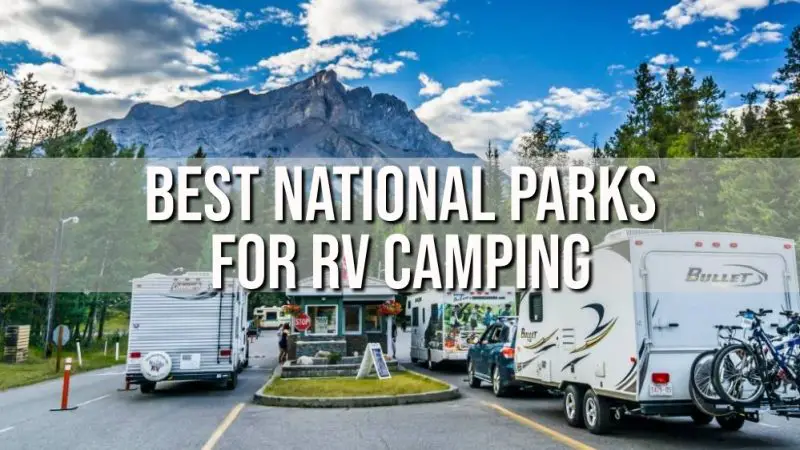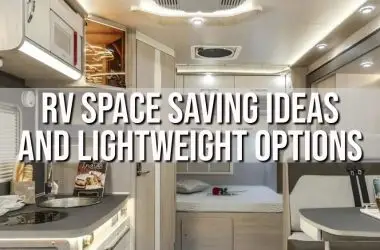With stunning scenery and endless outdoor adventures, America’s national parks provide the perfect destination for RV camping. Exploring national parks by RV allows travelers to have a comfortable mobile basecamp while experiencing these iconic landscapes. This guide covers the suggestion for best national parks for RV camping and everything you need to know to plan the ultimate national park RV camping trip.
We’ll discuss how to choose the right park for your interests, taking into consideration geography, amenities, and activities. You’ll find recommendations for top national parks for RV camping across different regions of the U.S. Tips are also included for preparing based on seasonal weather conditions and following safety best practices in national parks. With epic views and memories waiting to be made, national parks offer ideal destinations for RV travel and camping.
Key Takeaways
- Look for national parks with developed RV campgrounds, hookup sites, dump stations and nearby amenities.
- In western parks, consider Yosemite, Grand Canyon and Joshua Tree which offer spectacular scenery.
- On the east coast, RV-friendly picks include Acadia, Shenandoah and Everglades National Parks.
- In the Midwest, top national parks for RVs include Yellowstone, Badlands and Mount Rushmore.
- Visit earlier or later in peak season to avoid crowds. Check weather and road conditions.
- Follow safety tips like carrying maps, staying on designated trails and being bear aware.
Understanding RV Camping
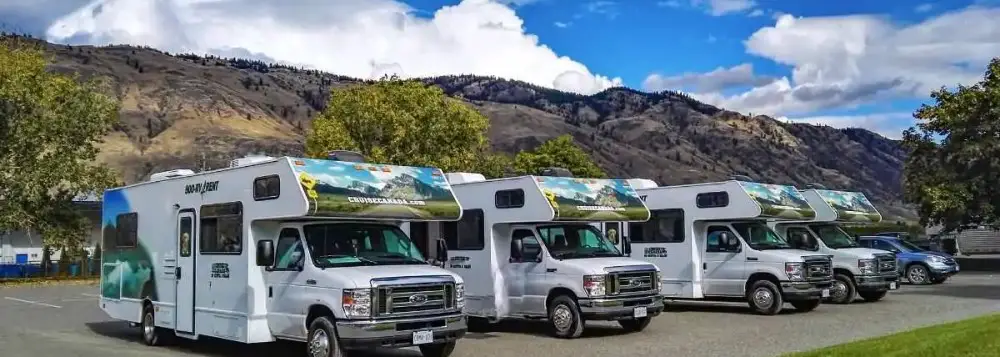
RV camping provides a unique way to experience national parks. Recreational vehicles allow travelers to have comfortable sleeping quarters, kitchens, bathrooms and living spaces while staying in the midst of awe-inspiring landscapes. RV travelers have convenience while still immersed in nature.
National parks manage designated campgrounds for both tent campers and RVs. Many parks have first-come, first-served campsites while others require reservations in peak season. Sites range from basic with no hookups to full with electric, water and sewer. Dump stations, restrooms and showers are usually available.
Understanding park-specific RV rules and limitations helps travelers determine if a particular destination suits their needs. Always check individual park websites when planning. Some parks restrict RV length, generators or types of RVs allowed in certain campgrounds. Conducting research ahead of time ensures an enjoyable national park camping trip.
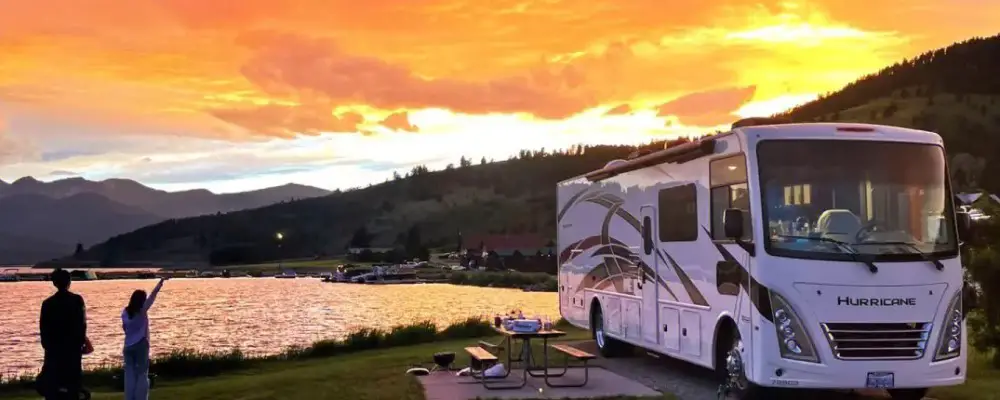
Choosing the Right National Park for RV Camping
With over 60 national parks across the U.S., travelers have ample options to choose from. But finding one suited for both your interests and RV is key. When selecting a destination, consider these factors:
Locations and Geography – Parks vary drastically in climate, terrain and ecosystems across the U.S. Consider your interests – mountains, deserts, beaches, etc.
RV Campground Facilities – Check availability of hookup sites, dump stations, road accessibility for larger rigs, reservation policies and RV length restrictions.
Nearby Amenities – Parks more remote will require greater self-sufficiency. Proximity to towns affects accessibility.
Activities and Attractions – Determine which parks offer the hiking, wildlife viewing, scenic drives and attractions that interest you most.
With hundreds of parks spanning from the coasts to the heartland, the possibilities are endless. Do your homework when selecting to find the ideal spot for your RV adventure. Here are some top national parks for RV camping across different regions.
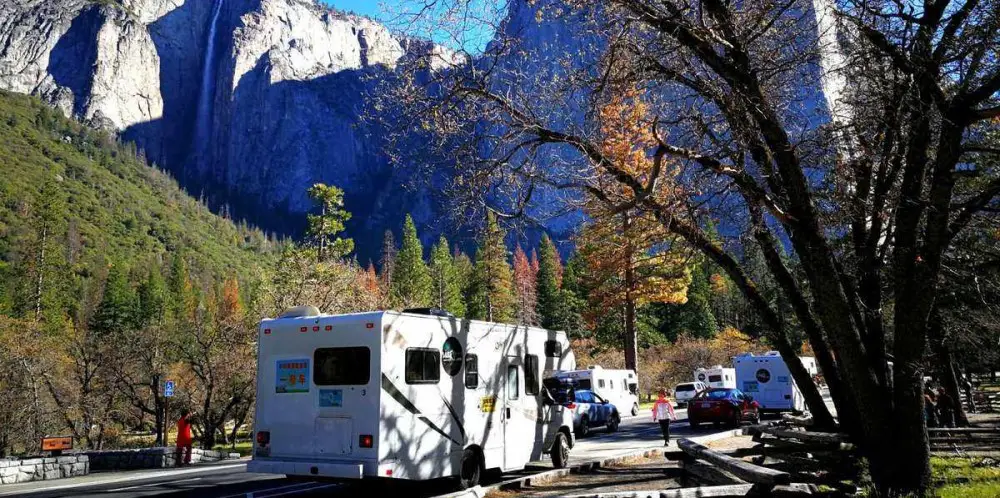
Best National Parks for RV Camping in the West
In the western United States, stunning national parks protected immense natural landscapes and geological formations. With wild deserts, vibrant canyons, and Sierra peaks, these parks offer epic backdrops for RV camping.
Yosemite National Park
Yosemite National Park in California’s Sierra Nevada mountain range is considered one of the crown jewels of the national park system. From plunging waterfalls to towering giant sequoia trees, Yosemite’s scenery amazes around every bend.
Within the park, two main campgrounds exist in Yosemite Valley itself offering RV sites steps away from the valley’s iconic Tunnel View and surrounding cliffs. Five additional campgrounds a bit further out in the Wawona, Tuolumne, and White Wolf areas provide more RV sites as well, some also with electric and water hookups.
Easy to strenuous hiking trails ranging in lengths from one mile to over 10 provide options for all abilities to take in the breathtaking up-close views of Half Dome and El Capitan as well as tromp through the Mariposa Grove of monolithic sequoias.
Grand Canyon National Park
Further east, Grand Canyon National Park in Arizona protects one of the seven natural wonders of the world. This UNESCO World Heritage Site amazes visitors with its sheer immensity, depth and ever-changing colors.
The most popular South Rim area with its visitor center, shuttle buses and myriad overlooks offers the most accessible RV camping opportunities. Trailers up to 30 feet in length can be accommodated at the Mather and Desert View campgrounds here.
The remote North Rim with its log cabin lodges offers a quieter experience for more adventurous RV travelers able to navigate the twisting drive. Even a short walk from either rim allows you to feel dwarfed as you take in the epic views of this mile-deep gorge carved over millennia by the Colorado River. Sunrises and sunsets paint the layered cliffs and buttes in stunning hues of red and orange as shadows dance along the canyon walls.
Joshua Tree National Park
Further west, Joshua Tree National Park delivers a landscape characterized by its namesake twisted, spiky Joshua trees. The alien-looking trees sprout from the boulder formations and desert vistas coating the Mojave Desert terrain.
With 6 developed campgrounds and over 300 first-come primitive sites, Joshua Tree offers ample camping spots for RVs and trailers wanting to basecamp amidst this magical desert landscape. Rock climbing the jumbles of giant boulders, hiking among the freakishly shaped Joshua trees, and exploring preserved mining-era homesteads provide immersive adventures.
At night, stargazing where the Milky Way dazzles unfettered takes center stage. Its proximity both to Palm Springs and Los Angeles in southern California makes it easily accessible for most RV travelers while still providing an otherworldly escape.
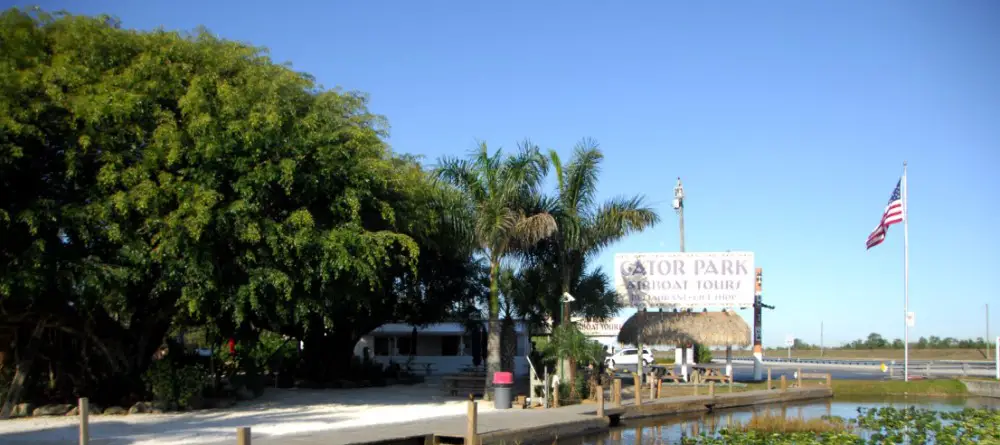
Best National Parks for RV Camping in the East
From the rugged coast of Maine to the tropical swamps of Florida, East Coast parks showcase diverse ecosystems. Root your RV in a new scenic wonder each night.
Acadia National Park
At Acadia National Park on Maine’s rocky Atlantic coast, campers can wake up to the sound of crashing ocean waves against the pink granite shores. Acadia encompasses both this pristine shoreline as well as pine forests, granite peaks and historic carriage roads.
Two campgrounds, Blackwoods and Seawall, provide RV sites with electric hookups allowing you to conveniently basecamp steps from both the ocean and dozens of hiking trails past striking coastal vistas.
Explore iconic sites like Thunder Hole, where waves violently smash into a narrow chasm, or drive to the top of Cadillac Mountain, the highest point on the eastern seaboard, to enjoy panoramic views overlooking Bar Harbor. At night, retire to your campsite to gaze at clear starry skies free from light pollution.
Shenandoah National Park
Further down the coast in Virginia, Shenandoah National Park stretches 105 miles along the Blue Ridge Mountains, showcasing incredible scenery of forested peaks and waterfalls that earned it the nickname “Daughter of the Stars.”
Three campgrounds – Mathews Arm, Big Meadows and Lewis Mountain – have electric hookup sites, hot showers and laundry facilities specifically catering to RV and trailer campers nested within the park’s 200,000 acres. Numerous hiking trails allow you to cool off by wandering behind tumbling waterfalls or along quiet mountain streams.
The park’s famous Skyline Drive allows you to take in 100 miles of panoramic mountain views right from your vehicle if you wish to rest your hiking legs any given day.
Everglades National Park
For a uniquely exotic camping experience, venture into Everglades National Park – the largest subtropical wilderness reserve in the continental United States.
Two campgrounds, Flamingo and Long Pine Key, provide RV access to the mystical watery world of the Everglades teeming with alligators, tropical birds, dense mangrove forests and unusual swamp plants.
Launch your canoe or kayak directly from your campsite to immerse yourself in this one-of-a-kind landscape unlike anywhere else in the country.
Keep an eye out for manatees, turtles and even crocodiles in addition to spectacular arrays of wading birds like ibises, herons and egrets as you paddle through the slow-moving prairie and sloughs.
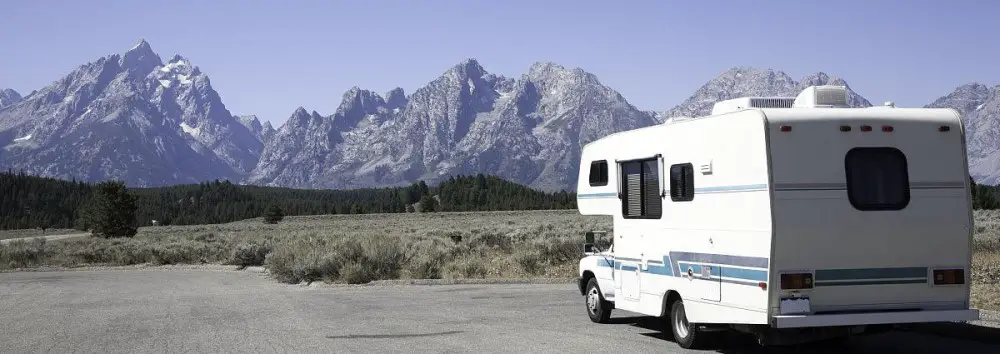
Best National Parks for RV Camping in the Midwest
In America’s heartland, national parks protect rugged badlands, geyser basins and monumental peaks. RV camping in the Midwest provides mountain majesty and wide-open spaces from basecamp.
Yellowstone National Park
Yellowstone National Park, established in 1872 as the nation’s first national park, is a must-see destination.
RV sites at nine campgrounds throughout Yellowstone provide easy access to the park’s top attractions including the iconic Old Faithful geyser and the rainbow-hued Grand Prismatic Spring. Witness the raw power of geysers erupting skyward and bubbling mud pots up close before soaking in the park’s colorful array of thermal pools.
Look for wildlife like grizzly bears, bison, moose, elk, and bighorn sheep grazing across this incredible volcanic wonderland of rivers and thundering waterfalls.
Mount Rushmore National Memorial
Just east in South Dakota’s Black Hills lies Mount Rushmore National Memorial, where the 60-foot granite faces of Presidents Washington, Jefferson, Roosevelt and Lincoln are immortalized.
Large pull-through RV sites at the park’s main campground come with full electric, water, and sewer hookups, located just 1 mile from the iconic sculpture. During your stay, don’t miss the nightly lighting ceremony that spotlights the four presidents’ faces.
Nearby attractions like the Crazy Horse Memorial, Custer State Park, Jewel Cave, and Sylvan Lake offer ample opportunities for exploration away from your campsite as well.
Badlands National Park
Alien, eroded butte and canyon landscapes define Badlands National Park, also in South Dakota, where you’ll feel you’ve landed on Mars.
The Cedar Pass Campground with its AMP/electric sites catering to large RVs provides a great basecamp in the park. The park’s dramatic and surreal beauty carved by time is best appreciated up close via the many trails and boardwalks threading through stripes of buttes and spires.
Sunrises and sunsets cast brilliant hues of pink, purple, and gold on the cliffs and canyons. Keep an eye out for bighorn sheep, prairie dogs, and black-footed ferrets.
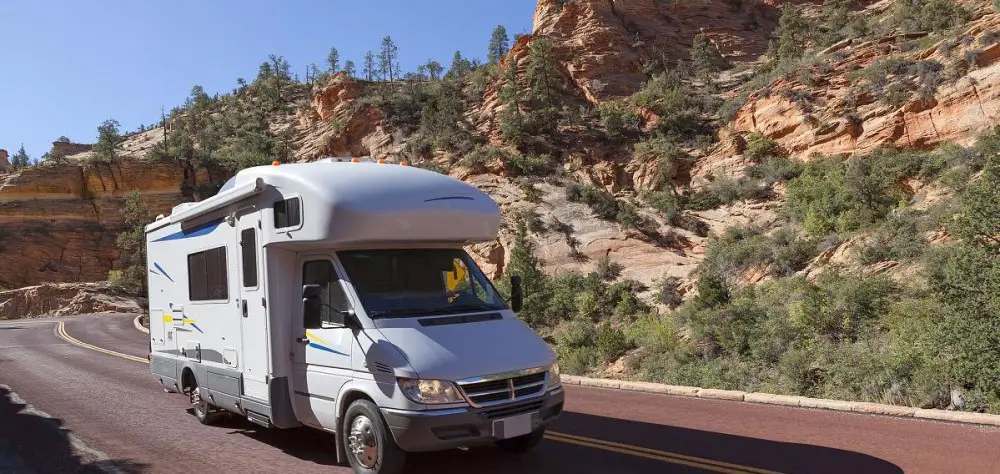
Seasonal Considerations for RV Camping
While beautiful year-round, national parks vary seasonally in weather, crowds and accessibility. Plan your RV trip during the optimal time based on region and your preferences.
In summer, parks are busiest but weather is mildest for camping. Snow may linger on trails in high elevation parks into July. Avoid holiday weekends when sites book up fast. For smaller crowds, aim for May/June or September/October shoulder seasons.
Winter brings solitude but frigid temps and snow may limit access. Some parks like Yellowstone and Glacier close parts of their campgrounds in winter. Check road and trail conditions which can close unexpectedly due to snow and ice even in spring and fall.
Scope out wildflowers and fall colors blooming times when planning dates. Whenever you visit, be prepared with layers and gear for changing mountain weather. Enjoy the parks’ different seasonal qualities.
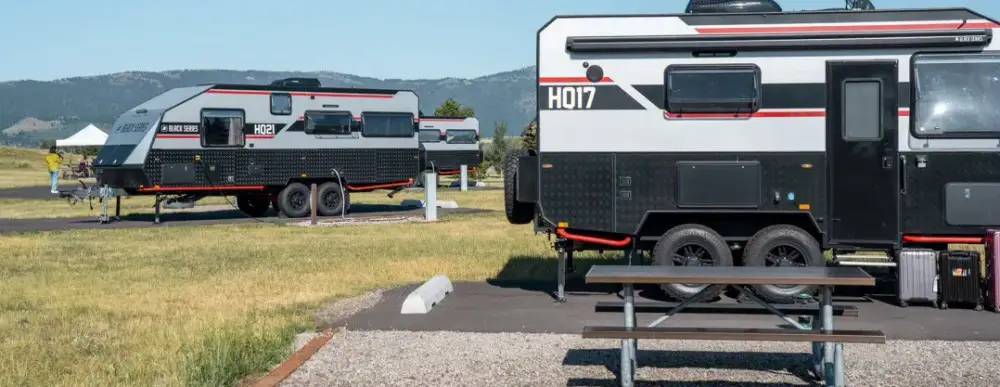
Safety Tips for RV Camping in National Parks
While national parks allow easier access to nature, certain risks are inherent. Follow these tips to stay safe RV camping in parks:
- Review park rules and read up on recent alerts or advisories before arriving. Carry park maps with you.
- Tell someone your plans and expected return time for backcountry trips.
- Stay on designated trails and do not approach or feed wildlife. Be aware of bears and proper food storage.
- Do not swim in waters of unknown depth or current, especially above waterfalls.
- Check weather forecasts regularly and evacuate if storms approach. Avoid lightning strikes by going indoors.
- Bring plenty of water and sun/bug protection. Watch for altitude sickness at high elevations.
- Get fully oriented with the area near your campsite in daylight before dark. Have adequate lighting at night.
While our national parks aim to provide access and education, situational awareness and preparation are vital to stay safe. Following park regulations and common sense keep risks low for an enjoyable RV trip.
Conclusion of Best National Parks for RV Camping
With incredible scenery and endless opportunities for exploration, America’s national parks offer the perfect destination for RV camping trips. Carefully select your destination based on location, amenities, attractions and accessibility for a comfortable basecamp.
Iconic picks like Yosemite, Grand Canyon, Yellowstone deliver epic western vistas and adventures. East coast gems like Acadia and Shenandoah capture rocky shores and forested mountain highlands. The swampy landscape of the Everglades or the alien terrain of Badlands provide novel ecosystems to discover.
Plan your visit’s timing wisely based on weather, crowds and road conditions. Follow essential safety precautions. At a national park campground, your tent door opens to a iconic landscape each day. Immerse yourself in the very best of America’s natural and cultural heritage by camping your way through its national parks. Let the crackling campfire and starry night sky be the perfect end to a day filled with discovery, adventure and awe.
Frequently Asked Questions
What are some of the best national parks for RV camping?
Some of the top national parks for RV camping include Grand Canyon, Yosemite, Zion, Yellowstone, Glacier, Grand Teton, Acadia, Great Smoky Mountains, Olympic, and Shenandoah. Each offers spectacular scenery and accessible campgrounds to accommodate RVs.
What are the fees for RV camping in national parks?
RV camping fees in national parks typically range from $15-$50 per night, depending on the park and site amenities. Sites with full hookups are more expensive. National park annual passes offer discounts. Campground fees are paid separately from park entry fees for your vehicle.
What are the length requirements for RVs in national parks?
RV length limits vary by individual national park and even specific campgrounds within a park. Most accommodate 20-40 foot RVs but a few parks have shorter limits. Always check regulations for your desired destination to ensure your RV or trailer meets size requirements.
What are some of the best national park campgrounds for 5th wheel campers?
Great national park campgrounds to accommodate 5th wheel RVs include Fishing Bridge at Yellowstone, Watchman Campground at Zion, Elkmont Campground at Great Smoky Mountains, Loops A & B at Grand Canyon’s Mather Campground, Jenny Lake at Grand Teton, and Dorst Creek at Sequoia National Park.
What are the RV requirements for camping in national parks?
Common requirements for RVs camping in national parks include adherence to vehicle length limits, hard-sided and self-contained vehicles only, 14 day length of stay limits in season, generator use hours restrictions, following food storage regulations if bears are active, and dumping waste only in designated dump stations.
Are RVs allowed in Yellowstone National Park?
Yes, RVs and trailers are allowed in Yellowstone National Park. The park has 12 campgrounds that can accommodate RVs, 5 of which offer electrical hookups. Be aware of Yellowstone’s high elevation and extreme weather, so prepare accordingly in an RV. Length limits exist in some locations.


